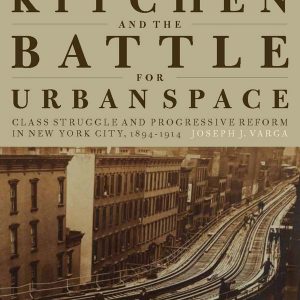Tuesday, October 29, 2013
Joseph J. Varga – Hell’s Kitchen & the Battle for Urban Space
In the period this book considered, Hell’s Kitchen, or “Manhattan’s Middle West Side” was considered by many commentators to be an area of poverty, corruption, crime and unsavoury types. In reality of course it was a home to thousands of working class people who carved their own lives out of the limited opportunities that they had. Writing in 1912, a social worker sums this up;
“[Hell’s Kitchen] has been known for many years as the scene of disorders, of disregard of property rights and public peace. Certain it is that in the minds of New Yorkers who live outside the district… as well as in the minds of the police… there still lingers a tendency and doubtless a liking to think and speak of the district by the name that disorders, rioting and crime won for it.”
Subtitled, Class Struggle and Progressive Reform in New York City, 1894-1914, Joseph J. Varga’s new book is a detailed examination of the development of this district in New York, but more importantly, an attempt to understand, using the concept of the “production of space” how that urban space was shaped and, in turn, shaped those who inhabited it.
Varga notes that one “useful approach” is to consider the different vision of land use envisaged by those who live and work in a space and those who wish to exploit it for profit, or “between those ‘planning and organizing themselves to make money’ though the increase of aggregate rent levels, and those striving for ‘affection, community, and sheer physical survival’.”
In this, perhaps its simplest form, the books’ discussion on the production of space in Hell’s Kitchen could be an extreme metaphor for all those urban areas being “developed” and reshaped to produce accommodation for those with money, while the mass of residents are pushed to the fringes of urban areas. However Varga takes this further. In Hell’s Kitchen, the production of space “meant different things to different people. Accounts gathered from residents show how categories such as ethnicity, class, race and gender could bring one to a sense of space, but also fragment those same categories.”…

Comments are closed.